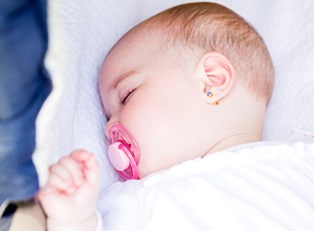Cleft palate is one of the most common birth defects, occurring during the first few months of development as an embryo. It occurs when there is a failure of the palatal shelves to fully come together from both sides of the mouth, resulting in an opening or split in the roof of the mouth that must be corrected through surgery.
Surgery
Generally, cleft palate repair surgery will occur between 5 and 15 months after birth. The procedure begins with anesthesia administered to the child so he or she is able to sleep through the procedure and feel no pain. Next, an incision is made on either side of the cleft and specialized flap techniques are used to reposition the muscle as well as hard and soft components of the palate.
After the repair is complete, stitches are used to close the incision site. These are usually placed in the midline of the roof of the mouth. If the surgery goes according to plan, it will provide enough length of the palate to allow for normal feeding and speech development, and the palate will continue to grow throughout life.
Recovery
After the surgery, the child will usually spend one night in the hospital. He or she will be discharged once they are able to drink an adequate amount of fluids.
In order for the new repair and stitches to be protected and promote healing, the child’s feeding, positioning, and activity will have to be slightly different for a short period of time. Infants will not be able to suck on a bottle for at least 10 days after surgery. Instead, a syringe with a short piece of soft rubber tubing should be used for feeding. Swallowing may be uncomfortable for the child, so IV fluids will be continued until the ability to drink improves enough.
Parents will be taught how to clean and apply ointment to the stitches for about a week until they are removed. To keep the child from putting hands or toys in the mouth, he or she will be required to wear arm restraints that restrict the bending of the elbows for about 10 days after surgery.
Future
While a cleft may be surgically repaired in one procedure, the treatment for a child born with a cleft will continue into adolescence and sometimes even adulthood. As the child grows, sometimes secondary plastic surgery procedures are required to improve function and appearance.
The child may also require speech therapy as he or she grows older. About 20 to 30 percent of children born with a cleft palate have speech problems that are severe enough to require secondary surgery. Most children with cleft palate will be able to develop speech normally after they recover from the initial repair surgery.
Also, sometimes cleft palate can affect the hearing of a child. Children with cleft palate are at higher risk for developing hearing problems due to middle ear infections. Therefore, ear health must be monitored closely as the child recovers from the cleft palate repair surgery and into adolescence.




